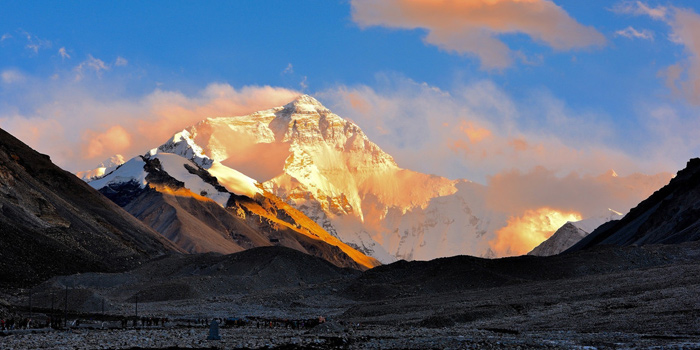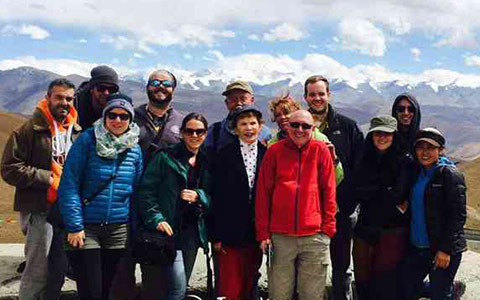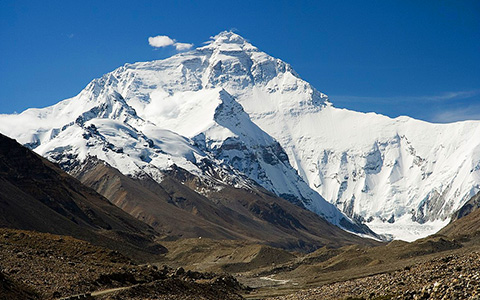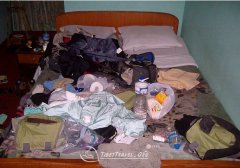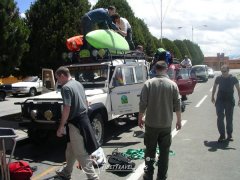Everest Base Camp Food: What and Where to Eat When Traveling to EBC in Tibetan Side?
Everest Base Camp in Tibet provides an easy way for tourists to witness the world's highest peak, Mount Everest. There's no need for long treks or rugged journeys; you can easily reach it by taking a tourist bus along a smooth, wide road. Besides the sights along the way, food and accommodation are among the top concerns for most travelers.
Now, we will focus on the dining options at Tibet Mount Everest Base Camp, including the dishes available to tourists and the restaurants to choose from, as well as other dining-related tips to answer your questions.
 When Travel from Lhasa to Tibet Everest Base Camp: Dine in Towns and Cities On the Way
When Travel from Lhasa to Tibet Everest Base Camp: Dine in Towns and Cities On the Way
 After Entering Tibet Mount Everest Scenic Area: Dining Options Become Limited
After Entering Tibet Mount Everest Scenic Area: Dining Options Become Limited
 At Tibet Everest Base Camp: Dine in the Tent Guesthouses or Rongbuk Monastery Restaurant
At Tibet Everest Base Camp: Dine in the Tent Guesthouses or Rongbuk Monastery Restaurant
When Travel from Lhasa to Tibet Everest Base Camp: Dine in Towns and Cities On the Way
Tibet Everest Base Camp is over 700 kilometers from Lhasa, making it impossible to reach in a single day. Typically, the itinerary from Lhasa to Mount Everest Base Camp spans 4 days and 3 nights, with two days for the outbound journey and two days for the return journey. Both trips pass through Shigatse, with a 2-night stay there.
On the first day, we will depart from Lhasa to Shigatse. Breakfast is provided by the hotel in Lhasa. For lunch, we will stop at a restaurant along the way, usually in Nagarze County or Gyantse County, offering a selection of Chinese stir-fry dishes. Or you can discuss with your guide about where to eat and what to eat. For dinner, after reaching Shigatse city, there are various dining options within the city and you can choose on your own or consult with your guide.
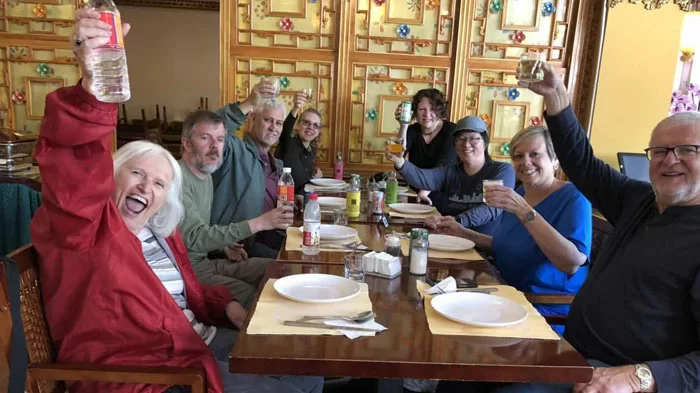 Dine in local towns while traveling from Lhasa to Everest Base Camp.
Dine in local towns while traveling from Lhasa to Everest Base Camp.
On the second day, we will travel from Shigatse to Tibet Everest Base Camp. Breakfast is provided by the hotel in Shigatse, and for lunch, you'll generally dine in either Lhatse County or Tingri County. Most of the time, the specific restaurant can be determined by your guide or your own preference.
For dinner, after arriving at the core area of Tibet Everest Base Camp, due to limited geographical conditions and cooking facilities, you can dine in the tent guesthouses you stay in. The tent owner will provide some food, such as noodles and simple stir-fry. Alternatively, you can choose to bring your own food.
The dining places during the return journey are similar to the first two days, and you are free to choose what to eat. However, due to geographical conditions and ingredients, the food options may be somewhat limited. Nevertheless, Lhasa offers a variety of local delicacies, and you can taste a wide range of foods from different regions and styles at local specialty restaurants in Lhasa.
After Entering Tibet Mount Everest Scenic Area: Dining Options Become Limited
Once you enter the Tingri Himalayas scenic area, the dining options and choices become relatively limited. Along the entire route, approximately 100 kilometers, there are two places that offer meals:
The first is Tashi Dzom Township. Tashi Dzom Township is located at the foot of Tibet Mount Everest and is the largest village on the way to Mount Everest. It serves many tourists each year, providing them with food and accommodation services. Local village restaurants offer authentic Tibetan cuisine, such as yak meat dumplings, Tibetan noodles, and even Sichuan dishes.
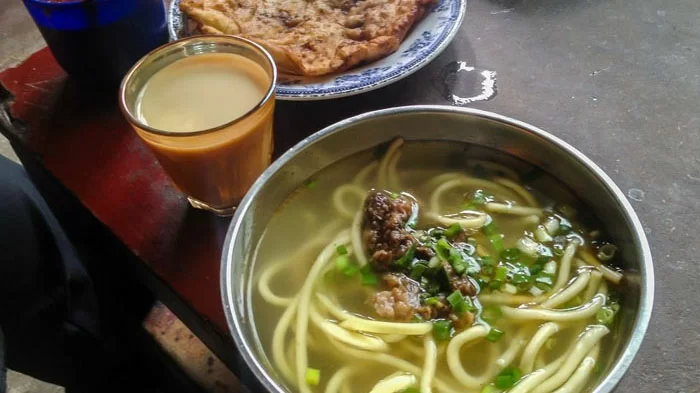 Tibetan noodles are offered in local village restaurant of Tashi Dzom Township.
Tibetan noodles are offered in local village restaurant of Tashi Dzom Township.
Tashi Dzom Township sits at an altitude of 4,200 meters, which is 1,000 meters lower than Rongbuk Monastery's living area. It is recommended to dine and rest here, acclimatize to the high altitude, and then continue on to Mount Everest Base Camp.
Another dining location is Basong Village, which is 30 kilometers from Rongbuk Monastery. Here, you can also find food and accommodation. The dining environment here is better than Tashi Dzom Township, and you can enjoy magnificent views of Mount Everest right outside the window. Compared to the 5,200-meter altitude of Rongbuk Monastery, it's better to dine and stay at the 4,200-meter Basong Village, which is friendlier to tourists experiencing mild altitude sickness.
At Tibet Everest Base Camp: Dine in the Tent Guesthouses or Rongbuk Monastery Restaurant
After reaching the Everest Base Camp, the living area at the foot of Tibet Mount Everest offers limited dining choices. There are mainly two kinds of restaurants here around EBC: one is tent restaurants run by local Tibetans, and the other is the restaurant in Rongbuk Monastery, the highest monastery in the world.
Dine in the Tent Guesthouse at EBC
There are no permanent Tibetan residents at EBC, and the tents are primarily operated by residents from Tashi Dzom Township and Basong Village.
From mid-April to the end of October, residents around Tibet Mount Everest set up yak-hair tents, run teahouses, restaurants, lodges, and small convenience stores. Summer is the peak season for Tibet Mount Everest tour, with a high volume of visitors; thousands of people stay at the foot of Mount Everest each night, and tent lodges are very popular, with a continuous flow of tourists.
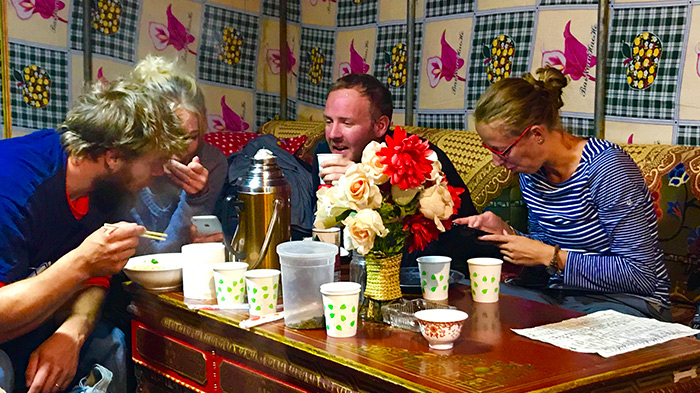 Tent restaurant at EBC offers basic food.
Tent restaurant at EBC offers basic food.
In the Tibet Mount Everest Base Camp living area, there are dedicated tent guesthouses, but most tent restaurants also provide accommodation. Almost every tent has friendly Tibetan hosts who will invite you in for a meal and a rest as you pass by.
Tent guesthouses at Tibet Mount Everest typically serve traditional Tibetan dishes like Tibetan noodles, tsampa (roasted barley flour), and sweet tea. They can also prepare simple Han Chinese dishes, such as porridge, fried rice, and simple stir-fry dishes (tomato and egg, stir-fried vegetables, cucumber, etc.). Prices usually range from around 20 to 30 Chinese yuan.
With the development of the tourism industry, you can also find simple hotpot dishes at tent restaurants at Tibet Mount Everest Base Camp now. Because the altitude is too high for heavy and greasy foods, the hotpot is typically prepared simply, with some vegetables, instant noodles, and canned luncheon meat. Imagine enjoying a steaming hotpot at an altitude of 5,200 meters in Tibet Mount Everest Base Camp; it's an exceptionally pleasant experience.
Additionally, the tent guesthouses at Mount Everest Base Camp provide hearty breakfasts, including pancake, coffee, butter tea, and fried eggs. The tent hosts also offer a wake-up service, ensuring that tourists don't miss the magnificent sunrise at Mount Everest. Every morning, about half an hour before the sunrise, they wake everyone up to ensure that you get to see the breathtaking Tibet Mount Everest sunrise.
Dine in the Restaurant of Rongbuk Monastery
Besides the tent guesthouses, you can also enjoy food in the restaurant in Rongbuk Monastery. The monastery restaurant is managed by the Rongbuk Monastery which is around 4km away from EBC. It is very small, and serves simple Chinese and Tibetan dishes and drinks, like noodles, rise, milk, fried dishes etc. Besides, there is also a shop selling instant food and canned food etc.
Compared to the tent restaurants, the monastery restaurant is big in space and warm. And there are people from all over the world gathering there sitting around a yak-dung burning stove. And if you spend the night in the monastery guesthouse, it is more convenient for you to eat in the monastery restaurant.
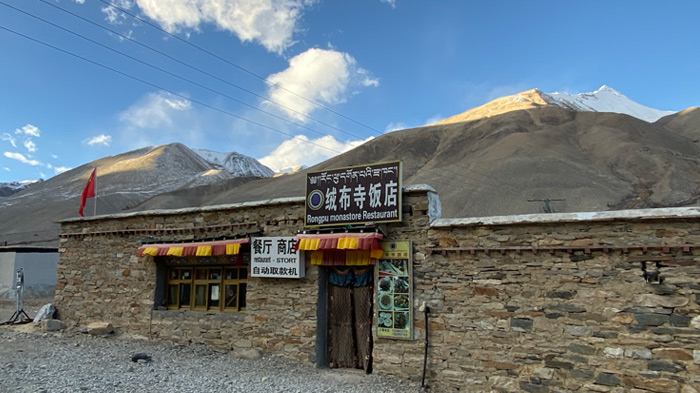 Rongbuk Monastery restaurant at EBC offers simple Chinese and Tibetan dishes.
Rongbuk Monastery restaurant at EBC offers simple Chinese and Tibetan dishes.
Insider Tips on Dining around Everest Base Camp
1) Regarding the dining environment at Everest Base Camp, you dine and sleep in the same tent.
Since most tent lodges at Tibet Mount Everest Base Camp provide both dining and accommodation services, the dining environment is different from regular restaurants. The area inside one tent is typically no more than 16 square meters, and the place where you eat is also the bed you sleep on at night. In the center of the tent, there is a stove for cooking and boiling water. During the day, it functions as a kitchen, and at night, it becomes a heating stove.
This unique dining environment is truly one of a kind! In this high-altitude region, the living conditions are quite harsh, and tourists from all over the world gather in one tent, sit around the stove, have dinner together, and then spend the night in the same warm tent. This is also a unique experience.
 The interior environment of Everest Base Camp tent guesthouse
The interior environment of Everest Base Camp tent guesthouse
2) If needed, you can also bring some food to Tibet Mount Everest Base Camp.
In the Tibet Mount Everest Base Camp living area, there is relatively abundant supply of goods, so even if you don't bring your own food, you can still have a good living support. Convenience stores provide various snacks throughout the year, such as instant noodles, cola, biscuits, milk, ham sausages, barley wine, beer, and more. However, the prices of these food items are generally higher compared to urban areas. If necessary, you can also prepare some of your favorite food or snacks.
Chocolate, candies: These contain sugar, which is a source of energy for the body and can also help alleviate motion sickness during the journey.
Instant noodles, biscuits, snacks: High-calorie foods can provide a sense of fullness and supply the body with the necessary energy.
Fruits, beverages, drinking water: These help replenish the body's water needs timely.
Nuts, small snacks: These can pass the time during the journey and can also be shared with others.
Chili sauce, condiments for rice: These enhance the flavor of the food, making the dining experience more diverse and flavorful.
Friendly reminder:
If economic factors are not a concern, it is not recommended to bring too many snacks. Due to the cold weather at Mount Everest Base Camp, self-brought food may easily spoil. In cold and high-altitude locations, enjoying hot and freshly cooked food using a pressure cooker can provide the body with sufficient warmth and is also the best protection for the digestive system.
In the living area of Mount Everest Base Camp, almost every tent provides butter tea or sweet tea. If you bring your own bread and instant noodles, you can buy hot water from the hosts to make instant noodles or a pot of sweet tea at a reasonable price. However, the boiling point of hot water for instant noodles is relatively low, around 70 degrees Celsius, so it may not fully cook the noodles. It is recommended to purchase noodles that the tent hosts have cooked in a pressure cooker, which are easier to digest and better for your health.
3) For better restaurants, you can also head to Tingri from EBC.
There is not much to eat around EBC and if you want to eat better, you can go to Tingri County for restaurants there. Tingri is at a lower altitude of about 4300 meters and is 114 kilometers away from the Everest Base Camp. The road condition is very good all the way, except for the sharp curves on the mountain roads to the Gawula Pass.
Restaurants and eateries are of various kinds at Tingri. Besides traditional Tibetan food, you can also enjoy Sichuan food, Moslem food, Northeast cuisine, etc. There are also tea houses, bars, etc. If you choose to stay overnight at Tingri, you are recommended to book the Tingri Everest Shanghai Hotel or Tingri Qomolangma Hotel, which offers both good accommodation and dining.
Conclusion
Dining at Tibet Everest Base Camp offers unique experiences despite some limitations. As you journey from Lhasa to EBC, stops in towns and cities provide diverse options. The Tingri Himalayas area offers limited dining, with Tashi Dzom Township and Basong Village serving authentic Tibetan cuisine.
At EBC, the tent guesthouses are popular options, where traditional Tibetan dishes are offered. These tent guesthouses, along with the Rongbuk Monastery restaurant, provide an exceptional setting to dine and stay. While food options at Tibet Everest Base Camp are relatively simple, the dining experience here is truly exceptional. So, with a joyful spirit, join us in traveling to Tibet Mount Everest Base Camp and fully enjoy this unique dining experience!

The Lhasa-born prodigy used to study business overseas, and got his Bachelor of Business in Nepal and India before moving back to his homeland. With pure passion for life and unlimited love for Tibet, Kunga started his guide career as early as 1997.
Responsible, considerate, and humorous, he devoted his entire life to guiding and serving international tourists traveling in Tibet. As a legendary Tibetan travel guru with 20-year pro guide experience. Currently, he is working in Tibet Vista as the Tour Operating Director. Whenever our clients run into trouble, he is your first call and will offer prompt support.
Related Articles & Posts
Most Popular Tibet Tour Packages
-

Lhasa - Gyantse - Shigatse - Everest Base Camp - Shigatse - Lhasa
USD939
View Details -

Lhasa - Gyantse - Shigatse - E.B.C - Saga - Kailash Trek - Darchen - Lake Manasarovar - Saga - Gyirong - Tingri - Lhasa
USD2059
View Details -

10 Days Lhasa to Everest Base Camp and Namtso Lake Small Group Tour
Lhasa - Gyantse - Shigatse - EBC - Shigatse - Lhasa - Namtso Lake - Damxung - Lhasa
USD1289
View Details -

8 Days Driving Across Himalaya Overland Adventure from Kathmandu to Lhasa
Kathmandu - Gyirong - Everest Base Camp - Tingri - Shigatse - Gyantse - Lhasa
USD1069
View Details -

4 Days Lhasa Impression Small Group Tour: Explore the Heart of Tibet and Mingle with the Locals
Lhasa
USD509
View Details -

Lhasa - Gyantse - Shigatse - Everest Base Camp - Gyirong - Kathmandu
USD979
View Details -

Lhasa - Gyantse - Shigatse- Lhasa
USD799
View Details -

13 Day Lhasa, Mt. Everest, Mt. Kailash, Lake Manasarovar and Kathmandu Adventure Tour
Lhasa - Gyantse - Shigatse - EBC - Saga - Darchen - Kailash Trek - Darchen - Saga - Gyirong - Kathmandu
USD2059
View Details


.jpg)



